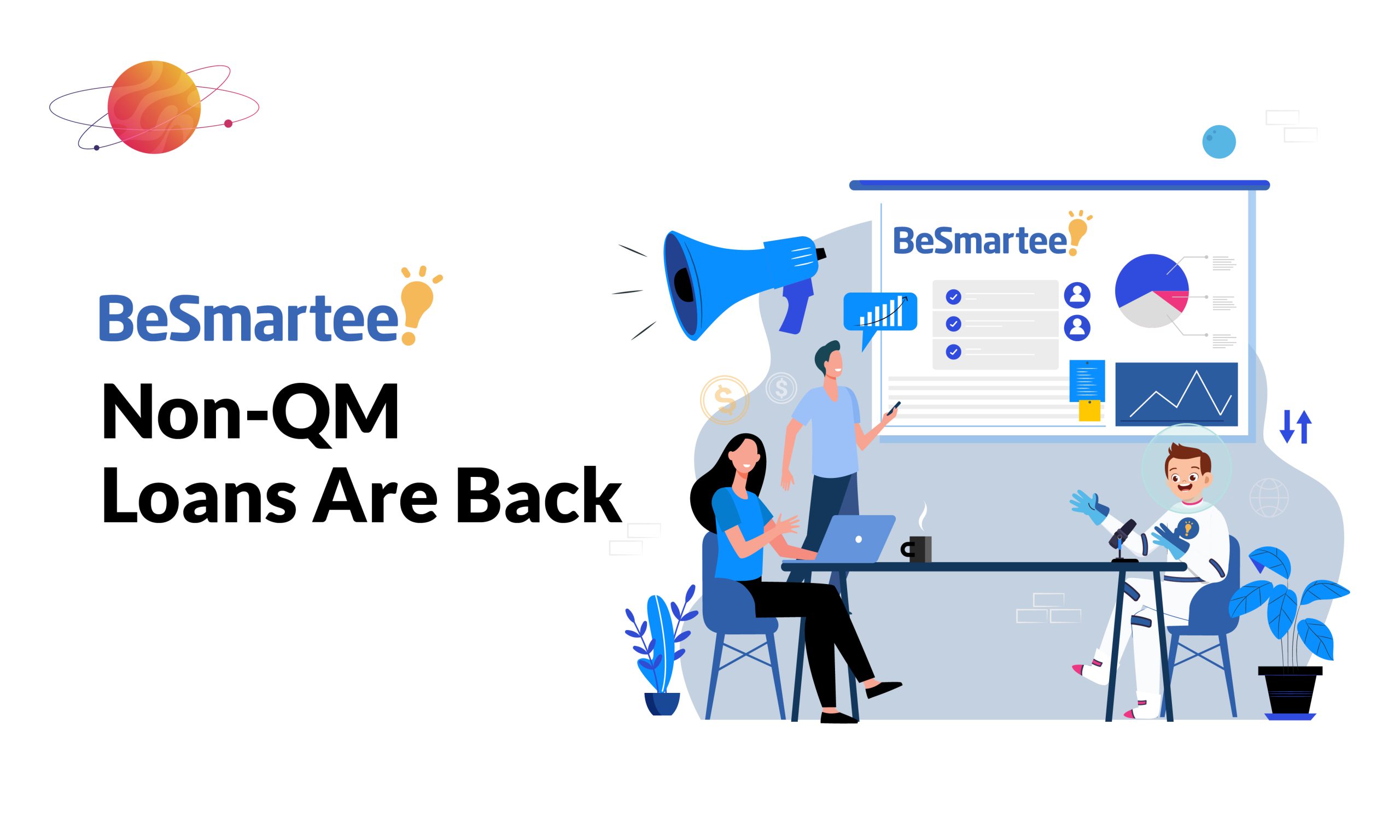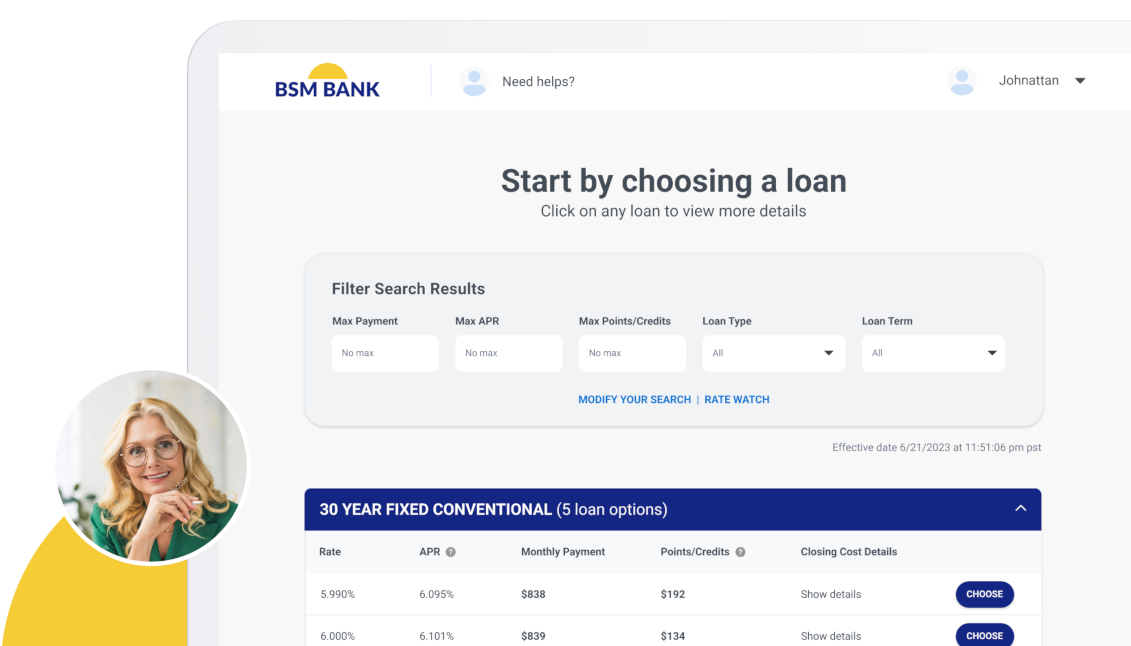The pandemic made for a rough year, but with the major rollouts of the multiple vaccines, people and businesses alike have been getting back on their feet. Undoubtedly, it’s a tough process, but the country’s economy is finally seeing the light at the end of the tunnel. Plenty of people have been going through refinances, but market trends predict that refinancing will start to slow down soon.
So, what’s in store? Well, it looks like non-QM (non qualified mortgage) loans will be taking the lending market by storm, according to S&P’s Global Report. Mortgage businesses everywhere have to brush the dust off their coats and get ready to step up to the plate to meet the rising demand. But why non-QM loans?
BeSmartee uncovers the reasons why non-QM loans have been making a comeback and the predictions about the coming months.
Pandemic Recovery
In response to the COVID-19 pandemic and the efforts to stimulate the economy, mortgage rates have dropped significantly during the past year. Borrowers can take advantage of those low rates to secure a new home, and many of them will turn to non-QM loans.
However, the pandemic also resulted in many citizens losing their jobs, changing their main source of income, or has otherwise impacted their financial circumstances. In light of those changes, many potential borrowers no longer qualify for traditional QM loans and are turning to non-QM loans instead.
Additionally, since Americans have been spending so much time at home during the Stay-At-Home orders, plenty of people have been remodeling or thinking of buying a new home. With the vaccine rollouts, more people will feel safe enough to finally purchase the home of their dreams.

New Requirements
Generally, new regulations for qualified mortgages are a headache for both borrowers and lenders. With a new president in office and the planned overhauls in place, there are bound to be quite a few federal changes in the upcoming year or two.
The Consumer Financial Protection Bureau (CFPB) recently issued a new rule replacing the DTI requirement for QM loans. This new rule allows plenty of previously non-QM loans to now be classified as qualified. By decreasing the liability for lenders for those non-QM loans, lending organizations will have more money for non-QM clients.
However, that is just one new rule among many, and plenty of loan organizations will need to reevaluate their processes. It’s important to take the necessary time to make the right changes and stay ahead of the curve, so your lending business doesn’t get lost in the shuffle.
Another new regulation has put new loan application forms into place, which may have significant consequences in your normal workflows. Companies have been scrambling to do their due diligence with this new implementation and find any areas where they can suggest feedback to improve the new rules.
All of these new regulations are aimed at including more borrowers as QM loans which means that companies can dedicate more time and effort, as well as resources, to non-QM loans. Don’t be fooled by the increased inclusivity, though: plenty of would-be borrowers won’t qualify under these regulations, and they’ll be looking for non-QM loans. These borrowers might include:
- Self-employed individuals
- Foreign nationals
- Real estate investors
- Credit-blemished individuals
- People with fluctuating income
- People with major assets
Seasoned QM
While this rule doesn’t mean that any loan can reach safe harbor (aka a presumption of compliance), it does open doors for some non-QM loans to be eligible to qualify as QM loans after a period of 3 years. During that time, the loan must comply with specific requirements. Not every non-QM loan will qualify, but this opportunity can be a godsend for borrowers with non-traditional credit profiles as well as creditors as long as the performance requirements are reached.
For Non-QM Loans
After the non-QM market took such a tumble during the height of COVID-19, they have had plenty of time to reevaluate their securitization. There have been calls to change certain policies regarding the securitization collateral for low-interest loans. These changes will make non-QM loans more appealing for lending organizations and borrowers alike.

New Technology
With the ever-changing technological landscape of lending, like automation of mortgage appraisals, loans are becoming more efficient. That newfound efficiency decreases the time spent for the agency and the customer while also reducing the overhead costs involved. By utilizing the new technologies, companies can get the maximum ROI from their investments.
Many companies have begun offering new non-QM products and packages to their clients in preparation for the increasing demand. These products allow lenders to properly analyze their potential borrowers and ensure that their offerings are safe and secure for both themselves and their customers.
Subscribe to BeSmartee 's Digital Mortgage Blog to receive:
- Mortgage Industry Insights
- Security & Compliance Updates
- Q&A's Featuring Mortgage & Technology Experts
Hurdles for Non-QM Loans
Of course, not everything is going to go according to plan. If nothing else, we learned that the hard way over the past year. While non-QM loans have been predicted to revive in the coming months, there are a few challenges still standing in the way.
For one thing, most consumers and lending businesses are still very focused on refinancing. That’s not a bad thing, but it isn’t sustainable for companies to focus on solely. Companies should look ahead to the future and realize that splitting some of their attention now to prepare for the refinancing trend to slowly dwindle down and the non-QM loans to ramp up could make or break them.
Another hurdle is the continued skepticism of non-QM products. Some businesses are still insisting that QM loans are the only way to go and haven’t recognized how much demand there is, and will be, for non-QM loans.

How to Prepare for The Non-QM Boom
With all of the new legislation already out and upcoming, as well as the increasing demand for non-QM loans, it can be both an exciting and terrifying time to be a lending organization. Business is booming once again, but who knows what’s lurking just over the horizon?
In order to meet and continue to meet those demands, BeSmartee has a few tips for staying ahead of the curve in such a competitive market.
Stay on The Cutting Edge with Lending Technology
The pandemic may have accelerated the rate of technological implementation for many loan organizations, but nothing came out of thin air. These trends have been building for some time, and it’s no surprise that companies used them to pivot during an economic crisis to stay afloat.
For example, companies have been challenged by the enormous amounts of complex data that must be collected and analyzed to produce actionable information like customer insights. Leveraging big data has become a big problem for companies who aren’t taking advantage of new and improved technologies to aggregate all of those data points.
Automation has also significantly reduced many of the repetitive tasks in business workflows and allowed companies to cut overhead costs. Simplifying the work also lets lenders close loans faster to satisfy customers and accommodate more business. But it isn’t only lenders who benefit from the latest and greatest in mortgage technologies.
Millennials, one of the largest factions of current borrowers, would much rather do business with a loan origination company that takes advantage of the technological landscape. With increasing numbers of people being vaccinated each day, face-to-face lending could make a comeback, but most people still prefer to do things remotely.
Embrace Remote Working
In the wake of the pandemic, people have grown accustomed to doing more from the comfort of their homes. Even as vaccines are distributed, it may still be a while before the populace is ready to start doing business in offices again.
Many of the most successful loan organizations have adapted to these changes by allowing more of the loan process to happen through online portals and apps. When the information can be submitted by the potential customer online, it makes the process faster and easier.
For millennials who are still new to the process, they may need some guidance from experts through webchats or over the phone, but they want to see that loans can happen remotely. Their preference for newer and better technologies isn’t difficult to understand, so it’s important to transition your company out of the Stone Age and stay current with the modern world.
Roundup
It’s pretty clear that non-QM loans are back and here to stay. As long as borrowers have non-traditional financial circumstances and many more do in light of the pandemic, loan organizations will need to be on the ball with their non-QM loan offerings. In the end, it’s important to stay on top of emerging trends and technologies to edge out the competition and draw more customers to your business.
Check out this case study to learn why lenders turn to BeSmartee’s mortgage expertise.




